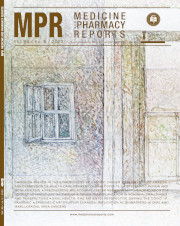Current aspects in biobanking for personalised oncology investigations and treatments
DOI:
https://doi.org/10.15386/mpr-2647Keywords:
biobank, biospecimen, ethical issues, personalized medicine, oncologyAbstract
Background/Aim. A biobank is an organization that gathers, refines, preserves and provides access to biospecimens along with relevant clinical data that can be used in applied or clinical research. Biobanking is a critical component of the scientific foundation for personalized medicine; this implies the accessibility of high-quality human biospecimens, such as blood, tissue, and other body fluids, along with the patient clinical data that goes with them.
Methods. This paper summarizes the function of biobanks in oncology and the requirements for biobank development in translational and clinical research.
Results. Biobanks raise numerous ethical issues that government agencies address by enacting particular laws. To develop personalized medicine, biobanks are crucial, given that the availability of an extensive collection of patient samples with thoroughly annotated clinical and pathological data is an essential necessity. Also, data related to biobanking raises complex ethical, legal, and social issues, particularly concerning the protection of donor privacy and the appropriate use of collected samples. International standards have been developed to address these issues to ensure biobanking practices’ quality, safety, and integrity.
Conclusions. Biobanking is vital in advancing biomedical research, supporting clinical applications, and enhancing our understanding of human health and disease. Using real-world data and biobanking can accelerate medical research, support personalized medicine initiatives, and improve patient care.
Downloads
Published
How to Cite
Issue
Section
License
The authors are required to transfer the copyright of the published paper to the journal. This is done by agreeing to sign the Copyright Assignment Form. Whenever the case, authors are also required to send permissions to reproduce material (such as illustrations) from the copyright holder.

The papers published in the journal are licensed under a Creative Commons Attribution-NonCommercial-NoDerivatives 4.0 International License.

